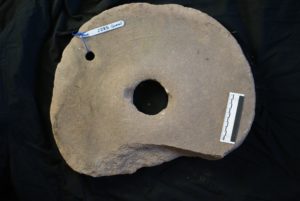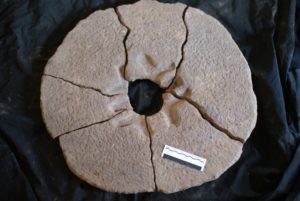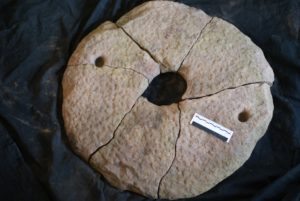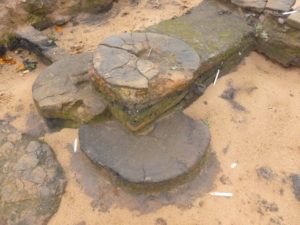An unprecedented number of rotary querns were found during excavation of Medieval and Post-medieval buildings at Cromarty.
The forty querns are broadly similar in size and style. The upper stones are flat disc querns, made by dressing a slab of sedimentary rock, or occasionally a schist slab, on the upper and lower faces. The upper stone was driven with a handle slotted into an upright stick hole. The metal frame for the spindle usually sat in a single pair of rhind slots, though a few, more complex variations are present. On some querns the stick hole has worn through the base showing the attrition of the quern arising from heavy use.
Four base quern stones were found, all made from a schist or granite and they have a socket in which the spindle sat, but which did not go through to the base. This essentially means that the spindle was not pushed upwards from the base to lift the upper quern stone, but that a washer-type system was used which made altered the gap between the upper and lower stones.
Many of the querns were found as fragments, but some have been left complete and repositioned in highly visible places where they were used in hearths, floors and walls. The final close analysis of the phasing and context of these querns will be an important contribution to the understanding of how social space was created in Medieval times.






